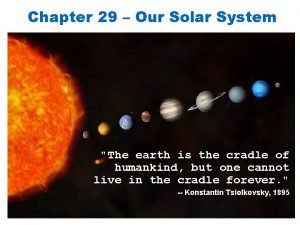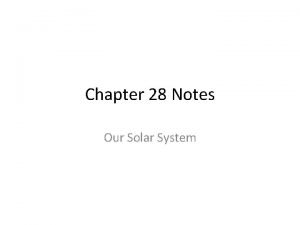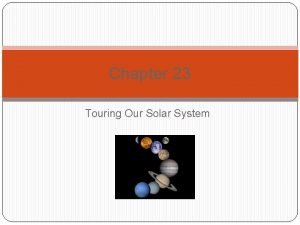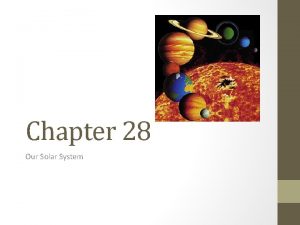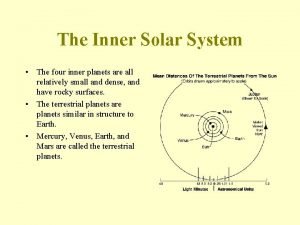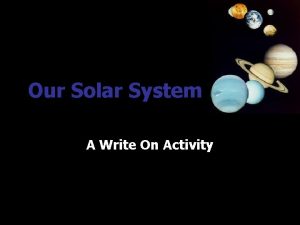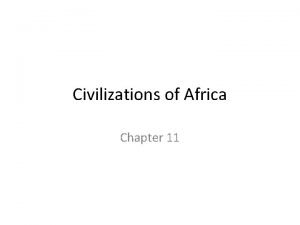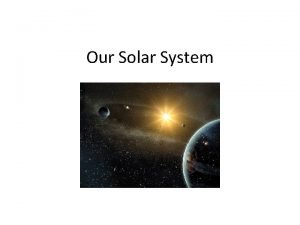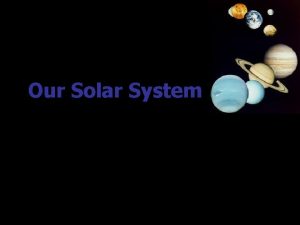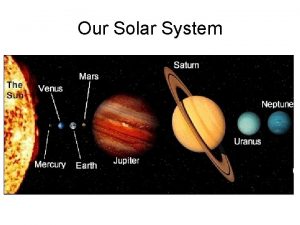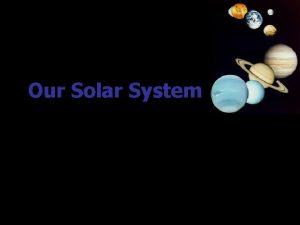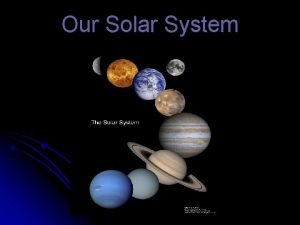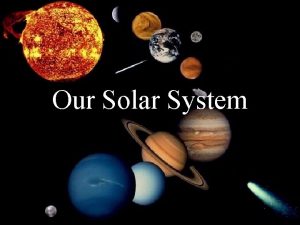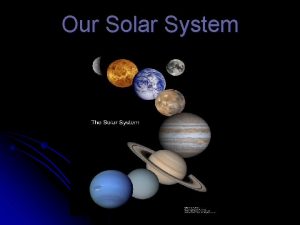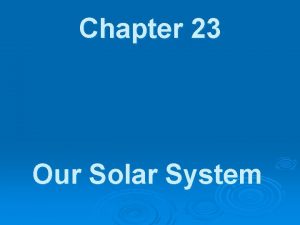Chapter 24 Section 1 Our Solar System Early










- Slides: 10

Chapter 24 Section 1: Our Solar System

Early Ideas about the Solar System • Geocentric (Earth Center Theory): early Greeks believed Earth was the center of the universe • All objects were imbedded in circular paths around us • Their order of the universe: Earth Moon Sun Mercury Venus Mars Jupiter Saturn Stars

Heliocentric Model • 1543: Nicholas Copernicus (Polish Astronomer) – proposed HELIOCENTRIC MODEL (SUN CENTERED) • Proposed a series of different views: • The Earth is a planet • The moon revolves around the Earth • Planets revolve around the Sun • The apparent movement of the sun & planets is due to Earth rotating on it’s axis

Heliocentric Model continued…. • Galileo supported Copernicus – Showed Venus goes through phases just like the moon – Only possible if Venus orbits the sun

Modern View of the Solar System • 13 Planets revolve around our Sun (5 = DWARF) – Mercury, Venus, Earth, Mars – Asteroid belt (separates inner & outer Planets) – Jupiter, Saturn, Uranus, Neptune, (Pluto, Eris, Ceres, Make, Haumea) • Most planets have at least one moon orbiting them • The sun contains 99. 86 % of all solar system mass • Gravity controls motion and orbital paths

Formation of the Solar System • 5 billion years ago large cloud of gas, ice & dust existed • Began to contract & slowly rotate – Contraction increased density & rotation – Gravity began to pull material toward the center – Density increases = increased rotation & gravity – Begins to form disk with large center

Formation of the Solar System continued… • Began to contract & slowly rotate (continued) – Central mass begins to heat up due to contraction • Temperatures reach 10 million 0 C • Hydrogen atoms begin to fuse together forming Helium • Fusion occurs, driving the formation of our Sun • The material outside the central mass forms planets


Parts of Our Solar System • Inner Planets: First 4 planets (+1 dwarf planet) – Solid, rock like structures • Asteroid belt: band of rocks orbiting the sun • Outer Planets: 4 planets farthest from the sun – made up of mainly lighter element gases – + 4 dwarf planets that are frozen ice balls • The sun is the center of Our Solar System!!

Motion of the Planets • Johannes Kepler studied planetary orbits – Discovered orbits are elliptical • Farther from the sun, larger the ellipse • Realized the Sun is not exactly central in our solar system – Planets travel through orbits at different speeds • Planets closer to the sun = faster • Planets change speed during their orbit as well
